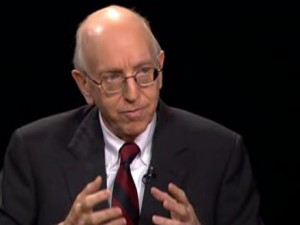I posted an article on Examiner.com on November 19 in which I discussed a case where a federal court dismissed a suit in which students sought to sue the school district for suppression of their free speech rights because the school had not allowed them to wear American flag-themed shirts to school on Cinco De Mayo. The school district prevailed when the court, applying the Tinker standard, stated the school had enough evidence to form a reasonable suspicion that the wearing of the shirts might lead to disruption at the school.
In a separate case but on a similar set of facts, a sister court reached a different conclusion and is allowing a student suit against the district for a violation of his free speech rights to proceed. The two cases came down on exactly the same day. Bear in mind, this ruling does not mean the students here will ultimately prevail, only that they have put forth sufficient evidence to show that a genuine question exists to try before the court. Comparing these two cases provides a glimpse into how fine the distinctions can be that school administrators must make.
Case Facts: In Kuhr v. Millard Public School District, a Millard South High School (MSHS) student, Julius Robinson, was killed by a known gang member. To memorialize him, his friend Dan Kuhr put together t-shirts that showed two pictures of his friend, one in his football uniform and one talking on the phone and smiling. Above these pictures were the words “Julius, RIP, 6-8-90, 6-15-08.” While testimony is contradictory as to whether Julius was in a gang, it is undisputed that he was friends with gang members and dressed the part. Both Dan and his younger brother and sister began wearing the shirt he had designed, as well as wrist bands memorializing their friend, to school.
The three siblings wore their shirts a number of days without any incident. Soon though, a teacher noticed Dan wearing the shirt. She had been trained that shirts bearing R.I.P. are quite typical for gang members. She notified the assistant principal about the shirt, and he called Dan from class. While in the office, Dan was told he must remove the shirt or turn it inside out to hide what was written upon it. Since Dan would not comply with either directive, he was sent home from school that day.
The reason given by the school for asking for asking Dan to remove the shirt was a fear of gang reprisals. According to the school principal, he had been told by a teacher that she had overheard a conversation between students where violence against the wearers was threatened.
Reasoning: The court ruled that this type of expression in school is ruled by the Tinker standard. In Tinker, the Supreme Court ruled that student do not shed their right to freedom of speech at the school house door. However, the rights of students are not the equivalent of the rights of adults. If a school can show that the speech is likely to disrupt school activities, then the speech can be suppressed. The court noted that the case closest to the facts here was Brown v. Cabell Cnty. Bd. of Educ. In Brown speech was suppressed by a school due to a fear of gang violence. Applying Brown, the court noted
“The ultimate issue in this case is whether the shirts were likely to interfere with school activities, including, but not limited to, the possibility of threats or acts of gang violence.”
In a summary judgment case such as this, for the court to allow the suit proceed, a party must show that a reasonable jury could conclude that the district lacked a reasonable forecast that school disruption could occur. The court appeared to rely heavily in making its ruling that the three siblings had worn the shirts and bracelets on a number of occasions prior to their being noticed by the teacher and no violence or disruption had occurred on campus. The court stated that based on these facts, a reasonable jury could find that the district administrators possessed no more than “an undifferentiated and remote apprehension of a disturbance.”

